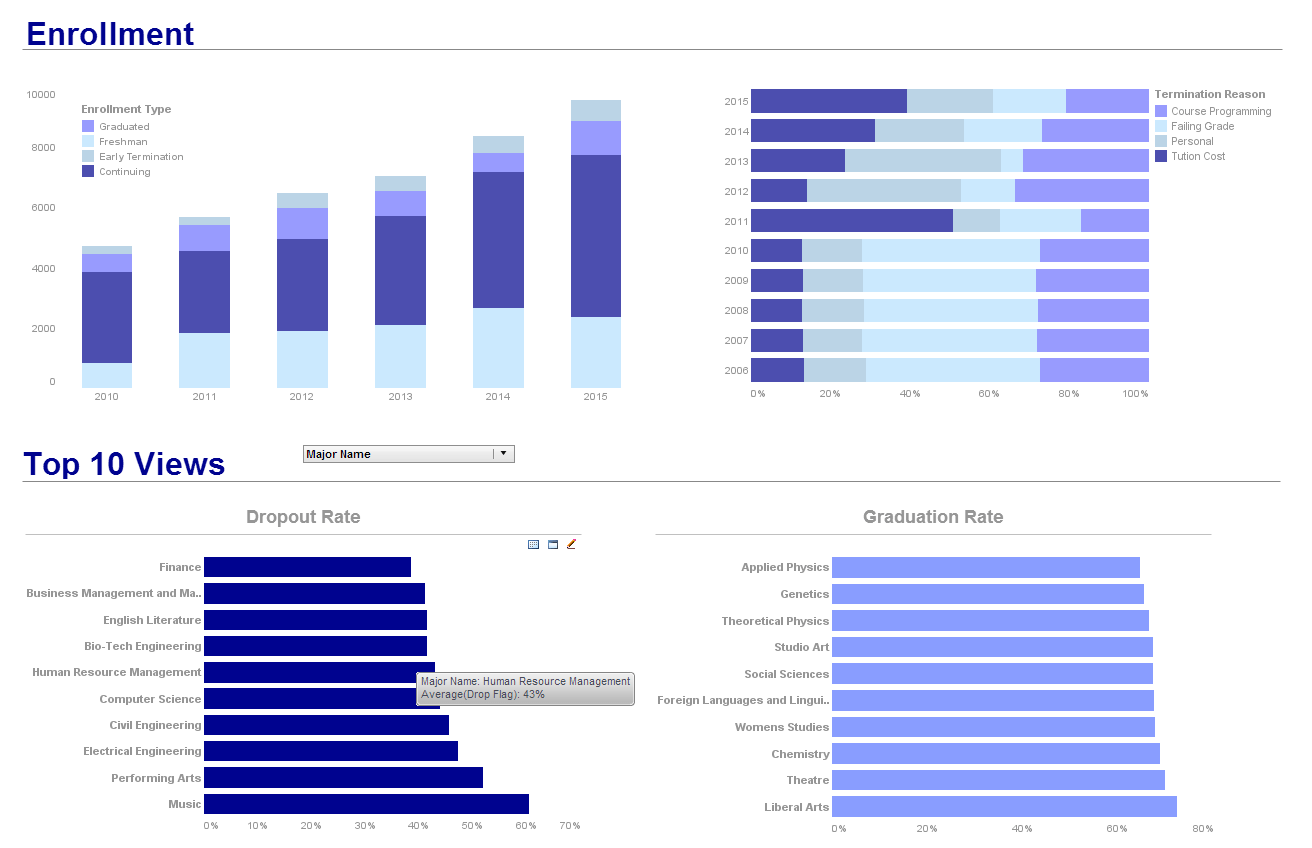InetSoft Seminar: Top Strengths Assessment Chart
This is the transcript of an in-person customer seminar hosted by InetSoft on the topic of "How Performance Management Consultants Work." The speaker is Christopher Wren, Principal Consultant at TFI Consulting.
Now those areas where you have white on your top strengths assessment chart, it may be that there is no process or that there is no relationship between that particular strategic value and that position. Those areas where you have yellow, well those would be the areas where you may not have some training materials or where you not have identified the skills or where you do not have provided the skills to that workforce.
And then those areas in red might be areas where you don’t have any descriptions whatsoever or where the descriptions are outdated or where the training materials are completely lacking. So it's another area where we look into, and the issue really here is that we want to make sure that we are pairing up the right people with the right task to set them up to succeed.
Another means, you can tell this is a very formal process, another one here is to essentially identify organizational processes and procedures and policies. Again, you have your corporate strategy. You have your values up there, and you are going to now say, okay what processes do I have within the organization, and then you are essentially defining the interrelationship between them.
 |
View a 2-minute demonstration of InetSoft's easy, agile, and robust BI software. |
Do you have a process in place for business planning? Is that process documented? Is that process communicated to all the stakeholders in the organization? Well, if you don’t have any of that, guess what, there is going to be a lot of reds, okay. If you have a process but it is maybe not very well-defined or it’s not communicated, well, you might get a yellow.
Again, we are looking for what are the causes why the people are not able to perform the work as well as they would love to. And then last, it's really relating strategy processes and performance indicators. And I am using KPI, a PI or whatever you want to use. It doesn’t matter, whatever the measures are.
And again, you have your processes here, you have your strategic values up here, and of course, what you want to do is that you want to map now what processes have what measures in place that link then to the strategy. We want to measure those things that are related to both the strategy and the effectiveness of the process. That is the ideal case.
So that is what we are doing with this kind of an assessment tool. And of course, in each case, I should have listed this here previously, you obviously have to identify who is the owner, who is responsible to maintain and update that, who is responsible to communicate those processes or who is the owner of those strategic values.
 |
Read the top 10 reasons for selecting InetSoft as your BI partner. |
I have seen many, many strategic plans of organizations where they say La-di-da-di-la, we want to be the best something, something, and we want to have financial growth, and we want to have customer growth and all of that. And they have targets there which is great, but you know what, they are not holding anyone accountable to meet those targets.
What I would expect is that there is a VP, senior VP or whatever, the Chief Financial Officer associated with each of these targets, and they are going to be the ones that are going to have their feet held to the fire, not wanting to be negative, when something doesn’t work that way.
But also there are people that will drive that measure and will drive improvement in that area because you know what, they are associated with it, they own it. So they have a pride of ownership, and they will try and achieve those targets no matter what. And of course, that’s all within the realm of policies and processes.
So when you put all of that together what comes out of it? Well, what comes out of it is essentially what these organizations are up to. They want to know what should I fix and what should I fix first? Where do I gain the greatest value, and that’s obviously the issue. And you see here a cost benefit or return on investment type calculation. That’s important. You are not going to fix something just because you want to fix it.
Read what InetSoft customers and partners have said about their selection of Style Scope for their solution for dashboard reporting. |
You are going to fix something, and you are going to expect some kind of a payback because you are going to commit internal and maybe external resources in order to address that issue.
| Previous: Analyze Management Performance |



